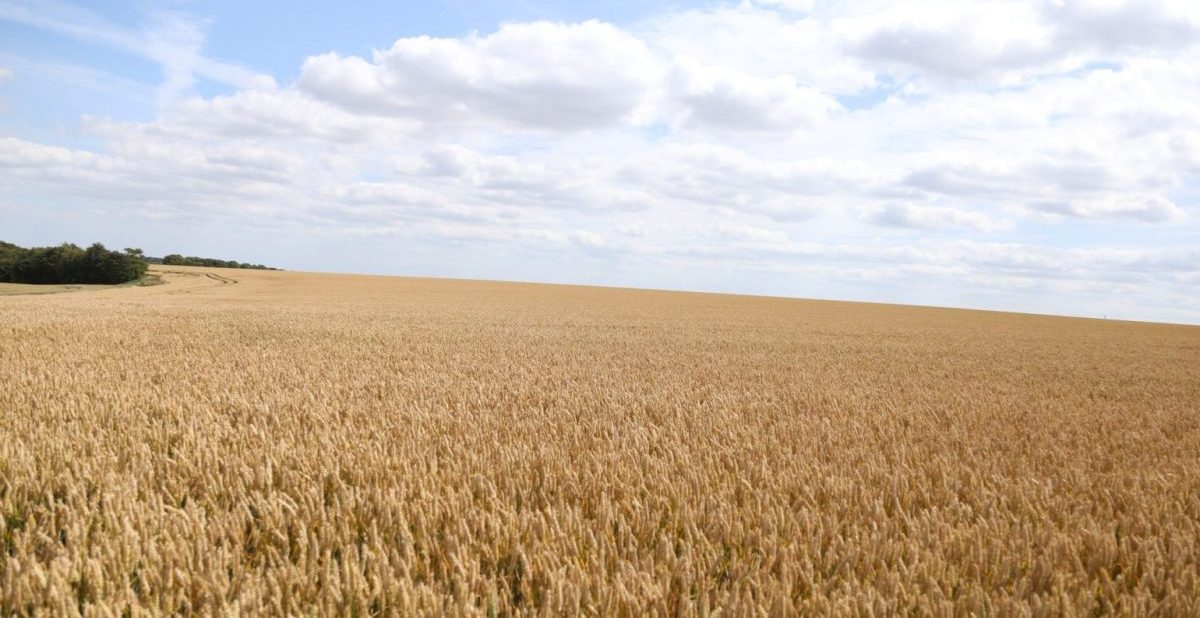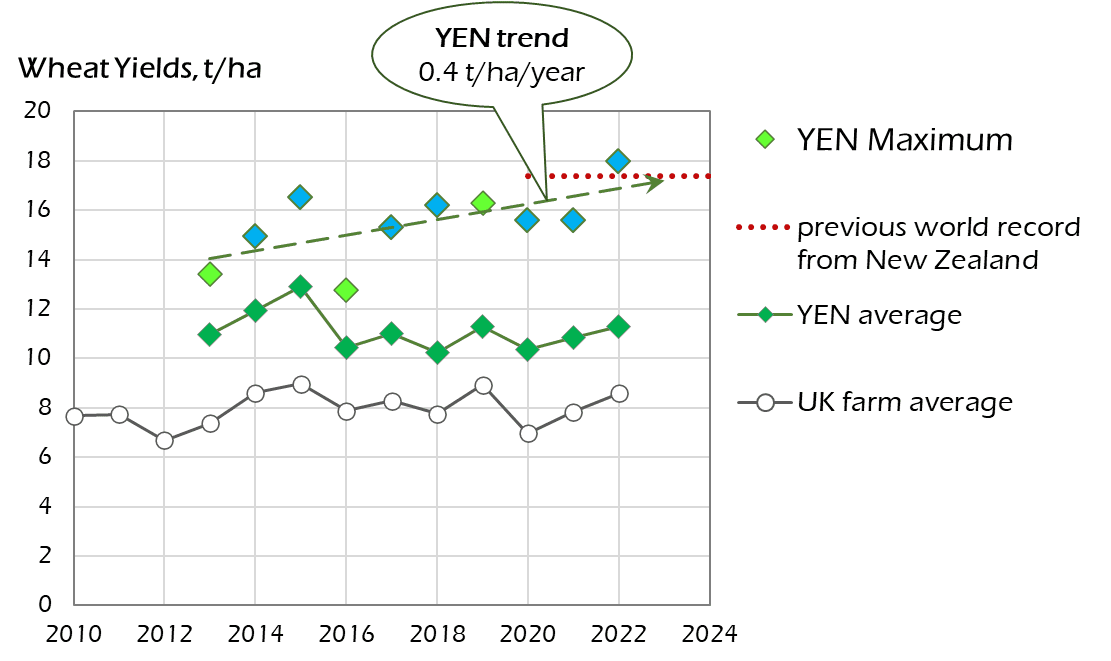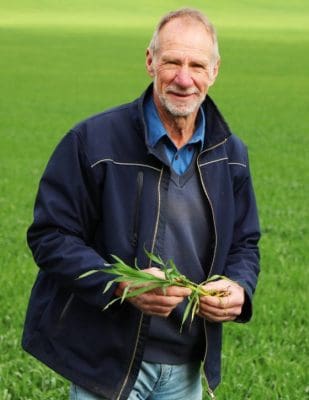
Source: BASF UK
THE DIFFERENCE between growers who achieve average and world-record yields appears to be attention to detail, according to crop consultant Allan Mayfield.
Based in Clare, South Australia, Dr Mayfield toured farms and research centres in the United Kingdom, Germany and New Zealand last year as part of a follow-up study from his 2002-03 Churchill Fellowship work.
This research included meeting with current world-record holder for the highest wheat yield, Tim Lamyman from Lincolnshire and the former top producer, New Zealand’s Eric Watson.
In both cases, the growers were achieving wheat yields about double the average of neighbouring growers.
Mr Lamyman’s world record, achieved last year, was almost 18t/ha, and Mr Watson’s best, from 2020 was about 17.4t/ha.
Dr Mayfield told the GRDC 2023 Adelaide Grains Research Update yesterday that both growers worked hard to continue to build on their yield potential.
“They push the boundaries…these are people who are pretty dedicated and pretty driven,” Dr Mayfield said.
“In short, it is attention to detail.”
World record figures
Dr Mayfield dug into the figures from Mr Lamyman’s recent Guinness Book of Records achievement, which was grown at his farm in Worlaby, Lincolnshire last year.
He said the crop measured about 500 heads per square metre, had 73 grains per head and about 48mg of grain.
At about 314kg/ha, Mr Lamyman used significantly more nitrogen than the UK average of 220kg/ha, .
The crop was grown in a “nothing special” rotation of wheat followed by oilseed rape, barley and wheat.
Dr Mayfield also highlighted that the 8.29ha crop, which came to public attention as part of the Yield Enhancement Network’s (YEN) annual competition, was not an outlier on the property.
“With Tim, he will put four or five paddocks into this program each year, and he sits out there in all of them.
“It’s not that he just putting all his effort into one paddock just to crack a world record, but the rest of the farm is falling down around him.”

Tim Lamyman’s YEN yields (blue diamonds) have set the standard in seven of the 10 years. Source: Yield Enhancement Network
Get the basics right
Dr Mayfield said growing hyper-yielding crops came down to making sure the fundamentals were right and then closely managing the crop from sowing to harvest.
He said Mr Lamyman and Mr Watson have both chosen locations well suited to growing wheat crops.
“They are obviously in a good location; they don’t get hot north winds or frost.
“They put a lot of effort into the selection of the variety.
“In the case of Tim Lamyman with that nearly 18t/ha, he picked a variety that just seemed to be outstanding.”
He said these growers also relied heavily on researchers and advisors to get the best results.
“They do rely a lot on research people alongside side them to help them because they are really pushing the boundaries.
“The way Tim works is that he pulls a whole team together; so, these are advisors, people in the fertiliser and the chemical industry, plant breeding and so on.
“He will pull them together and they meet all together a couple of times and go through the program.”
Crop protection, nutrition paramount
Dr Mayfield said both growers “don’t allow any disease or pests at all” and are vigilant to take early action whenever an incursion is suspected.
“They just throw whatever is needed at it to keep the crop beautifully clean.”
Dr Mayfield said in Mr Lamyman’s case, he used the same amount of growth regulators per application as other growers, but had more applications.
“Tim will put on growth regulators probably at the same total rate as others, but at five timings.
“With nitrogen, it was nothing special, it went on at three timings and the fungicides at four.
“When it comes to fungicides, they will use whatever the best is.”

Dr Allan Mayfield. Photo: Hart Field
Dr Mayfield said both world-record achievers did tissue tests frequently throughout the year to monitor the levels of crop nutrition.
“If they suspect anything is lacking, they will just put it on.
“They tissue test frequently, many times during the year.”
He said there was ample evidence that there was “very little that is lacking” in the nutrition of these hyper-yielding crops.
Is it worth it?
As one attendee of the Grains Update event posed, is it worth the potential financial expense and extra time required to grow a world-record crop?
“I think they stack up,” Dr Mayfield said.
“I think they grow the best crop they can.
“These are the people that we really should support.”
YEN director Roger Sylvester-Bradley said with a grower like Mr Lamyman, it was a massive misconception that “large yields require inputs”.
“Tim knows his main inputs are light, energy and water, which come free if his crops can capture them,” Mr Sylvester-Bradley said in a statement.
“Tim’s reported inputs in the YEN’s database indicate that his world-record crop must have achieved a 60pc greater financial margin than the average YEN crop, which yields 11 t/ha, and double the margin of the average UK wheat crop which yields 8t/ha.”
He said Mr Lamyman’s crop’s nitrogen-use efficiency, at 57kg grain produced per kilogram applied, was 35pc better than the average UK wheat cop.
Mr Sylvester-Bradley said the key difference was an “intensive appreciation of and attention to his crops’ needs, and frequent treatments” that set record crops apart from the average.
“Such high-performance crops produce more food from the same amount of land (dubbed ‘land-sparing’), they make more profit, and they use scarce or polluting resources more efficiently.”
Grain Central: Get our free news straight to your inbox – Click here



HAVE YOUR SAY